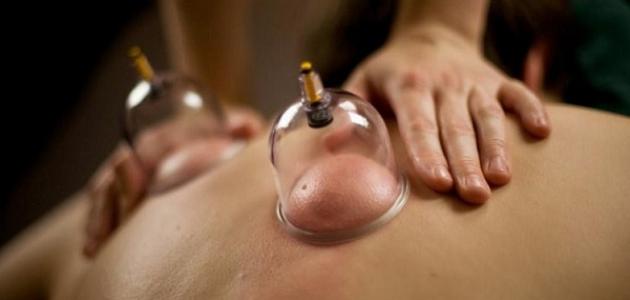In recent years, there has been a resurgence of interest in traditional healing practices, particularly those that emphasize holistic well-being. Among these practices, Hijama cupping therapy has gained significant popularity, especially in wellness circles. This ancient technique, rooted in Islamic tradition, combines aspects of alternative medicine with contemporary wellness trends, offering a unique approach to health and healing. This article explores the principles, benefits, and modern applications of Hijama Cupping Therapy in Dubai wellness landscape.
Understanding Hijama Cupping Therapy:
What is Hijama?
Hijama, often referred to as "wet cupping," involves creating suction on the skin using cups. This therapy is performed by placing cups on specific areas of the body to draw out toxins and stimulate blood flow. While traditional cupping therapy can be "dry," Hijama specifically incorporates small incisions in the skin to facilitate blood extraction. This process is believed to help alleviate various ailments by detoxifying the body and promoting healing.
Historical Context:
The practice of cupping dates back thousands of years, with evidence found in ancient Egyptian, Chinese, and Greek cultures. In Islamic tradition, Hijama is highly regarded, with references found in Hadith literature, attributing significant health benefits to the practice. Historically, it was used to treat a wide range of ailments, from headaches and respiratory issues to musculoskeletal pain.
The Science Behind Hijama:
Mechanism of Action:
Hijama cupping therapy operates on several physiological principles. The suction created by the cups enhances local blood circulation, which helps deliver oxygen and nutrients to tissues while promoting the removal of metabolic waste. The small incisions made during the therapy are believed to release stagnant blood and toxins, further facilitating the body’s natural healing processes.
Evidence and Research:
Recent studies have begun to explore the efficacy of Hijama cupping therapy. Research has shown promising results in treating conditions such as chronic pain, migraines, and even anxiety. For instance, a systematic review published in Complementary Therapies in Medicine noted that cupping therapy could significantly reduce pain levels and improve overall quality of life in patients with various chronic conditions.
Benefits of Hijama Cupping Therapy:
Pain Relief:
One of the most cited benefits of Hijama is its effectiveness in alleviating pain. Many individuals report significant relief from conditions such as lower back pain, arthritis, and fibromyalgia after undergoing cupping therapy. The enhanced blood circulation and reduced muscle tension contribute to its analgesic effects.
Detoxification:
Hijama is also considered a detoxifying therapy. By drawing out impurities and stagnant blood, it helps cleanse the body of toxins. This detoxification process is believed to support overall health and may aid in preventing various chronic diseases.
Stress Reduction and Mental Well-Being:
Modern wellness practices emphasize mental health and stress management. Hijama cupping therapy is known to promote relaxation and reduce stress levels. The calming effects of the therapy can help alleviate anxiety and improve mood, making it a valuable tool for mental wellness.
Improved Athletic Performance:
Athletes have increasingly adopted Hijama cupping therapy as part of their recovery regimen. The therapy’s ability to enhance blood flow and reduce muscle soreness can aid in faster recovery after intense workouts or injuries. Many professional athletes, including Olympic competitors, have endorsed cupping for its perceived benefits in performance enhancement.
Integrating Hijama into Modern Wellness Practices:
Holistic Health Approach:
As wellness trends continue to evolve, the integration of Hijama cupping therapy reflects a broader shift toward holistic health. This approach acknowledges the interconnectedness of physical, mental, and emotional well-being. By incorporating traditional therapies like Hijama into modern wellness routines, individuals can experience a more comprehensive approach to health.
Complementing Conventional Medicine:
While Hijama cupping therapy can be beneficial on its own, it is often used in conjunction with conventional medical treatments. Many practitioners advocate for a collaborative approach, encouraging patients to explore complementary therapies alongside their prescribed medical treatments. This synergy can enhance recovery and promote a more robust healing process.
Professional Guidance:
It is crucial for individuals considering Hijama therapy to seek treatment from qualified practitioners. Licensed therapists who are trained in the principles and practices of Hijama ensure safety and effectiveness. This professional guidance is essential for maximizing the benefits of cupping therapy while minimizing potential risks.
Conclusion:
Hijama cupping therapy represents a fascinating intersection of tradition and modern wellness practices. As individuals increasingly seek alternative therapies to enhance their well-being, Hijama offers a compelling option rooted in centuries of practice. With its potential for pain relief, detoxification, and stress reduction, this ancient technique is making a significant mark on contemporary health and wellness. By integrating Hijama into a holistic health framework, individuals can embark on a journey toward improved physical and mental well-being, embracing the timeless wisdom of traditional healing in the modern world.





Comments